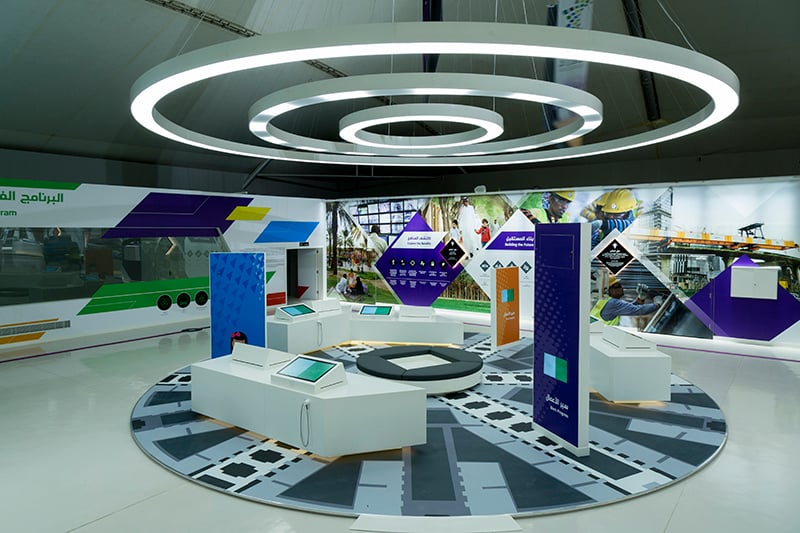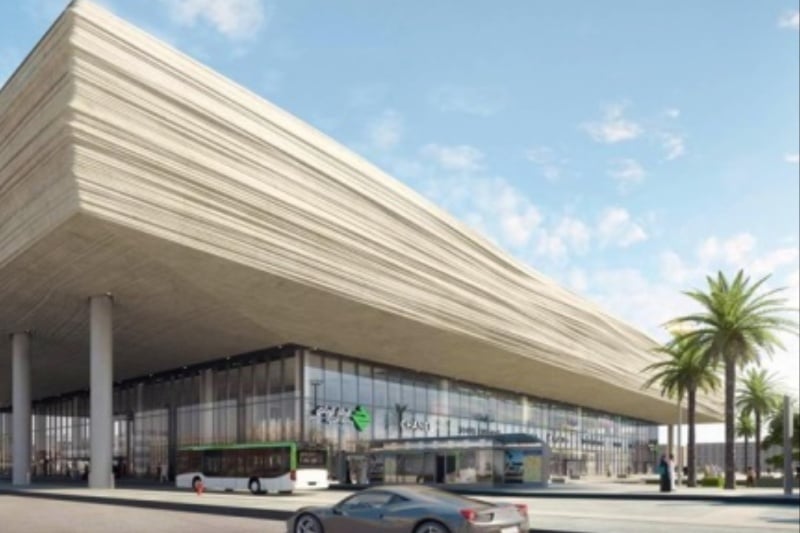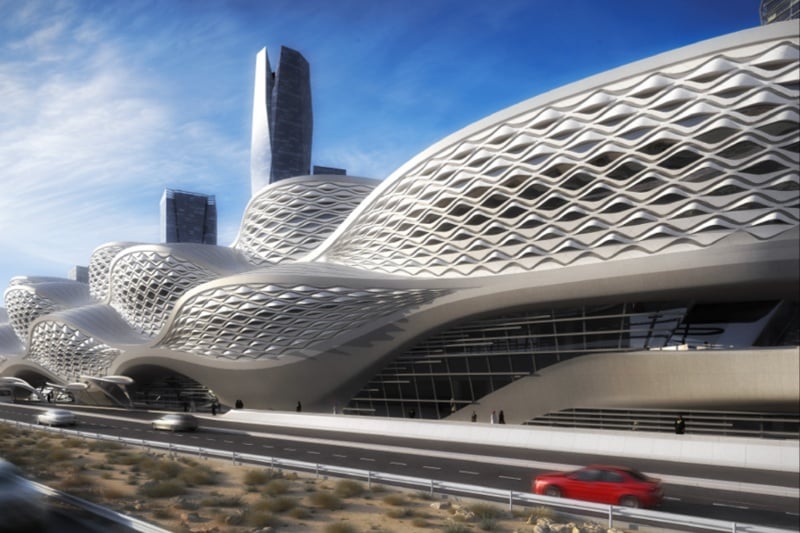The Riyadh Metro is now fully functional: here's your ultimate guide
All aboard…
First announced in 2014, the long-awaited Riyadh Metro welcomed its first guests on Sunday December 1 with three lines; since then, this week, the public transport system has launched two more lines, and here’s everything we know.
The huge public transport system is a part of Saudi Arabia’s wider Vision 2030, the Riyadh Metro project is set to transform public transport in Riyadh. The opening of the Riyadh Metro project will reduce congestion in high-traffic zones and is expected to be used by more than 1 million passengers annually.
What is the Riyadh Metro project?
Ever since plans were announced for the massive project set to change public transport in the buzzy capital, the metro project has been one of the most hotly anticipated megaprojects coming to the Kingdom. The project is not just limited to metro trains though, the Riyadh Metro buses started running this year too.
Part of a five-phase plan, phase one encompasses operating 340 buses and serving 633 bus stops and stations. Once fully launched, the bus service will cover 1,900 kilometres with over 2,864 bus stations and stops served by 842 buses.

When will the Riyadh Metro launch?
As we mentioned, the Riyadh Metro has partially launched with three lines being perfectly operational since Sunday December 1, 2024.
How many lines have been launched?
The metro will operate fully along three major lines: Al-Olaya and Al-Batha (blue line), King Khalid International Airport Road (yellow line), and the intersection of Abdulrahman Bin Auf Street with Sheikh Hassan Bin Hussein Street (purple line). Plus the lines along King Abdullah Road (red line) and King Abdulaziz Road (green line) have now also launched this Sunday (December 15). The line along Al-Madina Al-Munuwarah Road (orange line) has also launched as of today (Sunday January 5).
Tickets
Standard tickets on the Darb application cost SAR4 for two hours, SAR20 for a three-day pass, SAR40 for a seven-day pass, and SAR140 for a 30-day pass.
A first-class pass on the application will cost you SAR10 for two hours, SAR50 for a three-day pass, SAR100 for a seven-day pass, and SAR350 for a 30-day pass.
What stations have been revealed to the public so far?
There will be 84 Riyadh Metro stations in total, with four key stations that’ll allow passengers to move between the metro lines and to and from the bus network. These include Qasr Al Hokm Metro Station, which links the blue and orange lines; King Abdullah Financial District Station, located at the eastern side of KAFD, which will serve as a hub for the blue, yellow and violet lines; and Western Station, found in Al Sweedi district, which will be a hub for the orange line with a dedicated bus line on Shiekh Mohammad bin Abdul Latif Street.

The fourth and final main station will be the STC Station, although nothing has been revealed about its particular route so far.
What are the different carriages available?
There will be three different kinds of carriages available and a total of 470 (190 sets). Categories include singles, families and VIPS. The single one can be used by single men, while the family categories reserved for families and lone females, and the VIP section can only be accessed by those with VIP cards.
Where will the Riyadh Metro run?
There are six main lines and 84 stations covering a distance of 176 kilometres. Riyadh Metro network covers most of the highly populated districts, government facilities, and key educational and commercial areas. It is also connected to
The six lines are:
What is the expected capacity?
According to the Royal Commission for Riyadh City, the metro project is set to cater to about 1.2 million people daily, while the Metro buses are expected to cater to 500,000 people once fully functional.
Metro cars specs
The trains are fully automated and uniformly designed with passenger comfort in mind.
- 74 Inspiro sets for Lines 1 and 2, supplied by Siemens
- 47 Innovia Metro 300 trains for Line 3, supplied by Bombardier
- 69 Metropolis sets for Lines 4, 5 and 6, supplied by Alstom
Parking

According to the RCRC, the project also caters to car parks all over the city to make commutes that much easier.
21 park-and-ride locations with a capacity of 200-600 cars each, have been dedicated to facilitating the use of the metro network. The park and ride locations are well-distributed throughout the city to simplify commutes.
Images: Social
